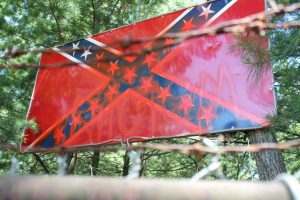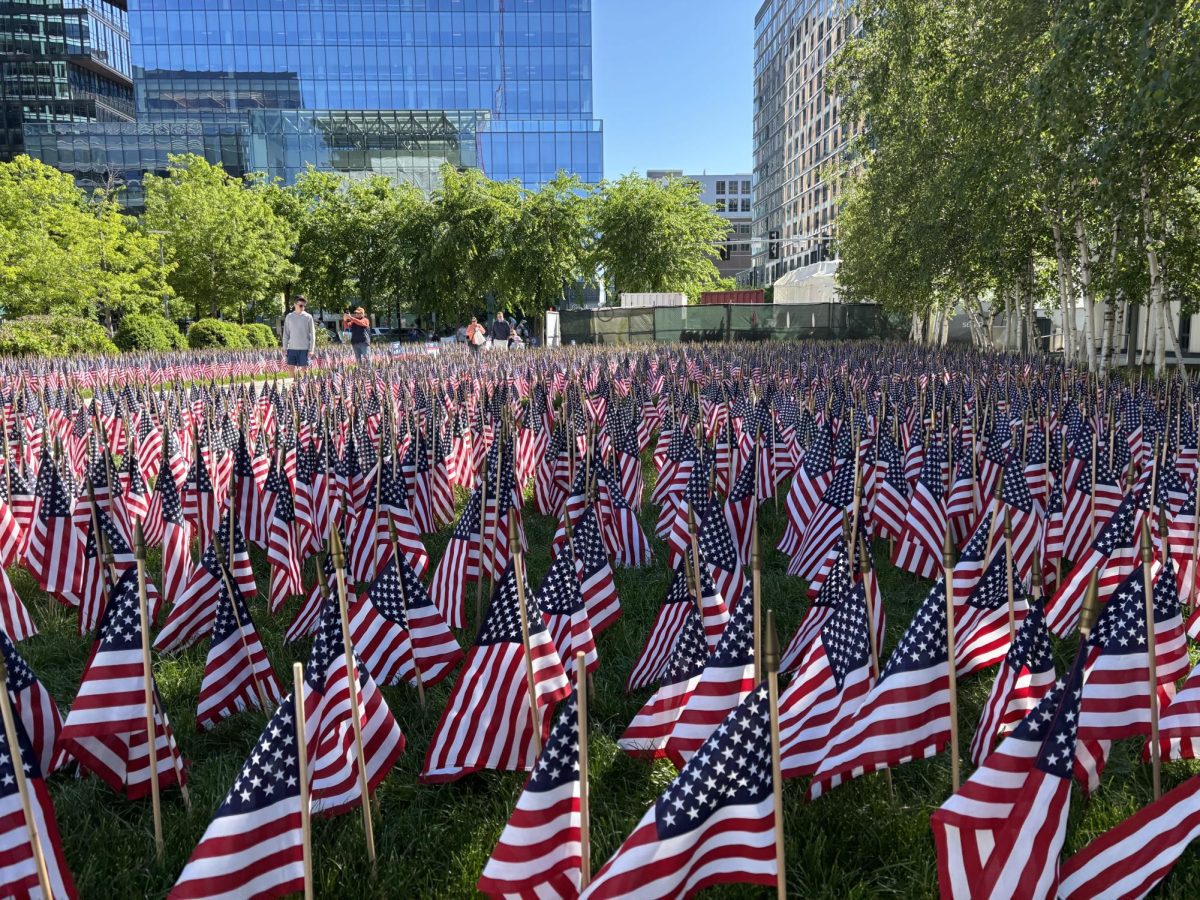
If you live in Walpole, chances are you know about the Confederate flag that sits behind a barbed-wire fence just outside school property, within view of both Walpole High School’s turf field and the stands that border it. If you know of the sign, chances are you know about the controversy that surrounds it. A few weeks ago, an unknown vandal spray-painted ‘racism’ in red spray-paint over the rebel sign. This vandal disagrees with the sign’s presence, but has it always been this way?
Walpole had not always been known as the ‘Rebels’; as a matter of fact, up until 1965 Walpole was known as the ‘Hilltoppers’. That year, the town held a contest to select a new school mascot and the name ‘Rebels’ quickly became the most popular; however, back then ‘Rebels’ was not meant to have any connection with the Civil War and the Confederacy. For a few years, Walpole was known simply as the Rebels, with no connection to the Confederate/Rebel flag and all it entails. Then in 1968, Walpole’s illustrious football program came under new leadership behind the well-known coach, John Lee. Local newspapers began calling Walpole’s football team ‘General Lee’s Rebels’, an analogy to the famous Confederate general of the Civil War, Robert E. Lee, and his steadfastly loyal troops. In time, students ran with this analogy and began bringing Confederate flags to football games in an attempt to show school spirit and pride in their town.
However, there has always been opposition to the use of the flag as a school symbol in the town. In 1993, a 1971 Walpole High School graduate named Mike Amaral re-opened the debate when he wrote a letter to The Walpole Times. He said, “What bothers me is that I still feel as I did 25 years ago […] the Confederate flag represents the symbol of a failed attempt to break with our Union as created by the fathers of this country, and also as the symbol of a state which did not recognize that all men are created equal.” Mr. Amaral’s letter was one of the first ever to address the Rebel debate in the Times, and his efforts to stop Walpole from using the Rebel as a mascot.
Nowadays, opposition is still present, but many still hope to maintain school and town tradition. With regards to the act of vandalism on the sign, junior vice-president of Student Council at Walpole High School Caleb Cofsky said, “I think spray painting the flag worsens the cause. Instead of solving the problem, the culprit only angered the owner of the flag and therefore decreased the chances of him taking it down.”
Many other student leaders agreed with Cofsky, including president of National Honors Society junior Jungbin Lim who said, “I understand that the perpetrator must have been frustrated with blatant racism expressed by the flag, but vandalizing was not an appropriate way of objection, in my opinion.”
On the other hand, some believe that the sign is simply a symbol of school pride and town history — nothing more. Junior football Captain Mike Rando, who walks by the flag every day in the fall, said, “People are going to have their opinions on everything. […] Everyone has a right to voice his or her opinion, and from my point of view, I see the flag as a symbol of school pride. I’m sure the owners have the same thoughts as me and probably don’t view their flag as racist.”
While not taking a stance on the issue, junior football Captain Steve Thulin summed up the conflict of school versus First Amendment rights: “Some other towns view it as racist, but the property owner is allowed to do that and hang it if he believes it is school pride.”
Opinion is really split down the middle in Walpole; however, from an outsiders’ perspective, there is largely only one opinion. Lim said, “The flag may have a significant impact on how other communities see Walpole. I have already talked to people from towns like Wellesley and even Andover, who have already heard about this issue. I believe that there is no doubt that the flag has a negative effect on the image of Walpole.”
Cofsky had higher hopes for how outsiders viewed the school. He said that most towns, while they know of the sign, do not associate the students with the racist implications. He said, “Some towns probably question the flag, but overall I think they overlook it and know that we are not a racist school.”
Regardless, the sign is on private property and the town and school have no real authority to tell the owners of the sign what to do with it. In the meantime, the high school will continue try to disassociate itself with the image. At graduation, a giant U-Haul truck was parked in front of it. At sporting events, other flags were raised in front of it. And now, someone has spray-painted “racism” across it.
The vandalized flag remains though, and so do many questions. Who vandalized this flag? A Walpole High School student? Someone from another town? Will the owner buy a new flag and raise that one? Will the next one be vandalized? Et cetera. With the flag standing on private property, the sign’s future is truly up to its owners, and only they can make the decision they feel is right for their town.
Special thanks to Sam Obar for his research on the subject in his 2009 Rebellion article ( https://walpolestudentmedianetwork.com/?p=1251 ).








Paul • Jul 10, 2015 at 12:28 pm
James, what a shame you didn’t express the same amount of outrage at Mr. Finneran’s rag. Trespassing and vandalism are clearly against the law. That was wrong, no doubt. But how about stepping up to the plate as well on the other side, just as strongly, if not stronger, about what that flag is all about. “Potentially harmful”? How much more tepid can you get.
Not that Mr. Finneran cares – because clearly he is more concerned and caught up with his own self-centered ‘rights’ – he can be reached at the following address for those who want to write to him in a civil manner to express their disdain for his gutless behavior. That is certainly legal.
Mr. Joseph E. Finneran
15 Occident Cir Walpole, MA 02081-3338
James Cullinane • Jun 13, 2012 at 4:45 am
Last time I checked, it’s been almost two decades since the Confederate Flag was used as the official or unofficial mascot for any sports team in Walpole. It is associated, unfairly, might I add, with the football team, however, I have never seen any type of endorsement of this symbol in my time at Walpole High School.
During the era in which it was used a symbol of school spirit, “General Lee” and his Rebels were not the only teams using this symbol; check the yearbooks. In fact, I believe many of which have a large confederate flag plastered on their covers.
Furthermore, we should keep in mind that whoever this wannabe-vigilante is has commited a crime, rather than speculate his or her motives. The flag that hangs on the boundary of Turco Field, regardless of any offensive effect it may have on citizens of both Walpole and other towns, remains on private land and is the private property of a long-time citizen of Walpole. Speaking for myself, I can say whole-heartedly that if my property was defaced with equally offensive spray paint, I would be enraged (as I hope everybody reading this would be).
However, if a culprit were to do so, I would prefer they matched colors to avoid any type of conspicous effect…
All jokes aside, this sounds an awful lot like malicious destruction of property and I don’t think it should be celebrated as some sort of heroic act.
And for the record, this isn’t some big endorsement of the Confederate Flag as the school’s mascot; it is simply a former student reminding all readers that the school and its athletic programs have done all they can to disassociate themselves from this potentially harmful symbol. What this private citizens decides to do with his property should be left to his own will and not up to wannabe avengers with a can of spray paint.